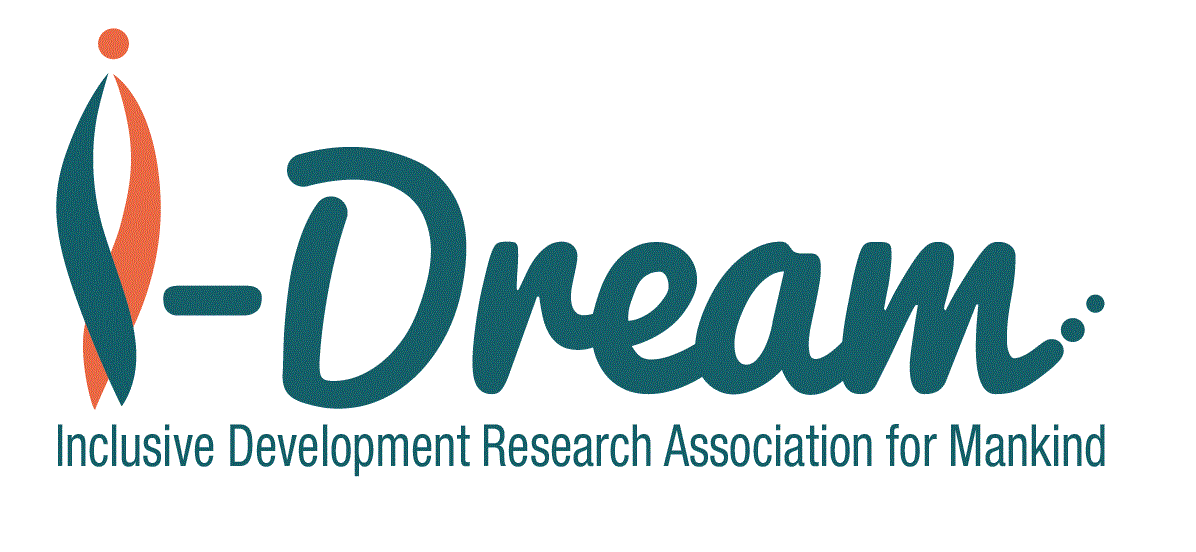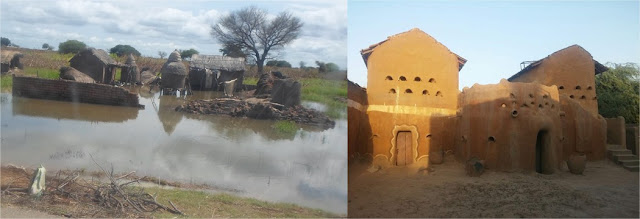An Affordable Housing Prototype for Chad
I-DREAM (Inclusive Development Research Association for Mankind) was formally established and registered as a charitable non-governmental organization (NGO) in France in March 2014, and has been developing forums to promoting the exchange of know-how, resources and techniques of associated members and external partners. The aim of this association is to improve the quality of life and increase the economic independence of disadvantaged regional communities in the world by seeking appropriate technologies and developing effective sharing methods.
I-DREAM announces a call for entries for its 1st Earth Architecture Design Challenge 2017: Designing affordable housing prototypes for urban/suburban/rural Chad, an international architecture competition aimed at students, emerging architects and practitioners from around the world who think earth architecture can be beautiful. Be a part of this collaboration. Let’s create change for people in need. Join our team to help us create housing prototypes with community labor using appropriate building techniques and local methods of construction. You’ll gain hands-on experience in earth-hand-made-construction by using local and recycled materials and an in-depth understanding of the local culture.
WHY EARTH ARCHITECTURE?
The building and construction sector is of key importance to the development of Africa and the wellbeing of its population. Africa can fulfil the demand for a built environment that meets the needs of Africa people through the application of sustainable building and construction concepts. Sustainable building and construction is important for the region and can offer potential to improve the health of people and the environment in surrounding areas as well as reduce the effect of poverty by upgrading unplanned settlements. It is essential to create buildings that are efficient with resources, affordable to build and operate, good to inhabit and appropriate to the context based on different areas of Africa.
It is a building material that has been used for 9,000 years: earth. Earth not only conserves the wood that surrounds it, it also takes up humidity relatively rapidly and releases it again when required. In this way it contributes, without any great input of technology, to a healthy indoor climate. As with other heavy building materials earth also stores heat. The biggest advantage, however, lies in its energy balance: the processing and use of earth involves only a tiny fraction – just 1% – of the energy that is consumed for producing bricks or reinforced concrete. Against a background of dwindling resources and an ever increasing world population, earth, properly used, could indeed establish itself again as the building material for the future.
WHAT IS THE CHALLENGE?
The challenge is to design prototypes of affordable housing for villagers that can be built with earth and other local materials in rural Chad. Total costs of constructing the design entry must not exceed $500 USD for materials; local labor excluded from this price. The jurors will use judging criteria involving functionality, aesthetics and technical matter to select designs to be developed and built on site.
WHO:
Everyone is welcome – enthusiastic volunteers, students and recent graduates of architecture, landscape architecture, engineering, interior design or anyone interested in earth architecture design and construction.
WHERE:
You can choose one (or some) of Urban / Suburban / Rural areas in Chad and provide your suggestion with what you find out from your background research regarding these areas.
HOW TO SUBMIT AN ENTRY:
Submission of entries is until 16th Apr 2017. To participate, submit your design entry via architecture@idream4all.org
SCHEDULE:
- Competition announcement: 1st Mar 2017
- Submission of entries: 16th Apr 2017
- Finalists announcement: 28th Apr 2017
- Design workshop 1: 27th-28st May 2017 in Paris, France
- Design workshop 2: 26th-28th Jul 2017 in Stockholm, Sweden (www.ekc2017.org)
- Construction commencement: Nov 2017 (TBD)
DELIVERABLES:
The project and its supplements will be submitted digitally in PDF format – a maximum of 10 A3s (Landscape) including but not limited to:
- Project Title
- Project Summary (Concept, Explanatory Text, Diagrams and/or Images)
- Drawings – Plans, Elevation, Sections, etc.
- 3D images or sketches
- Applicated material and construction techniques
LANGUAGE:
The official language of the competition is English. This means all texts to appear on the submissions, the documents to be provided alongside the boards, and all official documents for registration should be in English. The questions addressed to the organizers could be either in Korean, French, or English.
JURY MEMBERS:
The body of the jurors for the first Earth Architecture Competition is as follows.
CHA, In Sun (ZED Factory, UK)
In Sun is the Director at Reestor Ltd and is a Consultant Director of the Korea Division at ZEDfactory Europe Ltd. She has worked on projects specializing in Zero-carbon development in South Korea, China, and the UK. She has also worked on various social housing, private housing, and commercial schemes whilst working for Building Design Partnership, PRP Architects, Cole Thompson Anders (Integer).
HYUN, So Young (Mitie Energy, UK)
So Young is a sustainable design specialist at a global engineering firm based in London and is also a doctoral researcher at UCL Institute for Environmental Design and Engineering. She has previous experiences within UK and Korean architectural practices, and has maintained and developed her specialisms with the field of climatic analysis, passive design techniques, and building performance optimization. Her developing interests include advocacy for regenerative, net-positive sustainable design, enhancing social sustainability approaches and metrics through a refocus on people, human behaviors, wellbeing, and how new technologies and the increasing instrumentation of the built environment can be harnessed for positive change.
LEE, Seung Ho (Groupe ZI:UM, France)
Seung-Ho is the General Director at Groupe ZI:UM based in Paris and the president of the Association Korean Architects in France. He has worked on various remodeling projects with environmental approaches. He has also worked as a project manager on various projects at Architecture Studio and as a consultant at Oger international for various remodeling projects in Saudi Arabia. His developing interests are appropriate architectural design and technologies based on his multidisciplinary background including architecture, civil Engineering and architectural materials and integrated design process.
ADVISORY JURY MEMBERS:
The body of the advisory jurors is as follows.
- Dr CHOI, Kevin Kyeong-il (System Engineering Manager, Eutelsat .S.A / I-Dream Steering Committee Member)
- Dr KIM, Dowon (Director, TransScientia / I-DREAM Steering Committee Member)
- JEON, Jaesu (Honorary Consulate of South Korea in Chad / I-Dream Chad)
- PARK, Geun Sun (Somang Society Chad / I-DREAM Chad)
PRIZE:
Is your design buildable? Join us! All design teams will have equal opportunity to build their own design. Total 3 finalists (one team per each site condition – Urban / Suburban / Rural area) will be invited to I-DREAM build team to develop their initial ideas and to participate in design workshop for building a house on site. Funding for traveling to Chad will be provided.
ORGANIZER:
I-DREAM www.idream4all.org (general inquiry: contact@idream4all.org)
FOR ADDITIONAL INFO:
Contact architecture@idream4all.org

